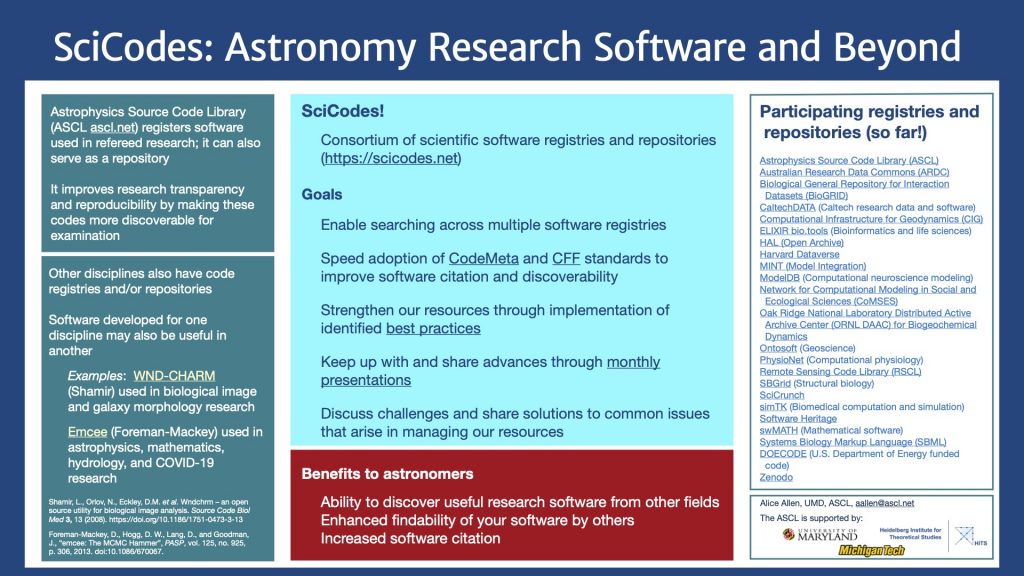Twenty-two codes were added to the ASCL in October:
ArtPop: Artificial Stellar Populations generator
BASTA: BAyesian STellar Algorithm
BCES: Linear regression for data with measurement errors and intrinsic scatter
exodetbox: Finding planet-star projected separation extrema and difference in magnitude extrema
FEniCS: Computing platform for solving partial differential equations
Flux: Julia machine learning library
GGCHEMPY: Gas-Grain CHEMical code for interstellar medium in Python3
GRASS: GRanulation and Spectrum Simulator
JWSTSim: Geometric-Focused JWST Deep Field Image Simulation
Nauyaca: N-body approach for determining planetary masses and orbital elements
ParSNIP: Parametrization of SuperNova Intrinsic Properties
PISCOLA: Python for Intelligent Supernova-COsmology Light-curve Analysis
PSRDADA: Distributed Acquisition and Data Analysis for Radio Astronomy
PT-REX: Point-to-point TRend EXtractor
pyro: Deep universal probabilistic programming with Python and PyTorch
Quokka: Two-moment AMR radiation hydrodynamics on GPUs for astrophysics
SELCIE: Screening Equations Linearly Constructed and Iteratively Evaluated
swordfish: Information yield of counting experiments
TauRunner: Code to propagate tau neutrinos at very high energies
ThERESA: 3D Exoplanet Cartography
TULIPS: Tool for Understanding the Lives, Interiors, and Physics of Stars
XookSuut: Model circular and noncircular flows on 2D velocity maps

